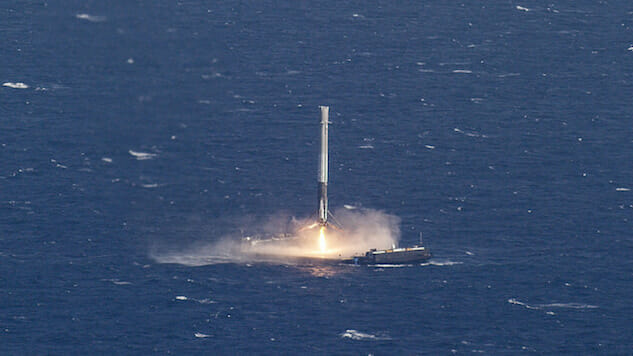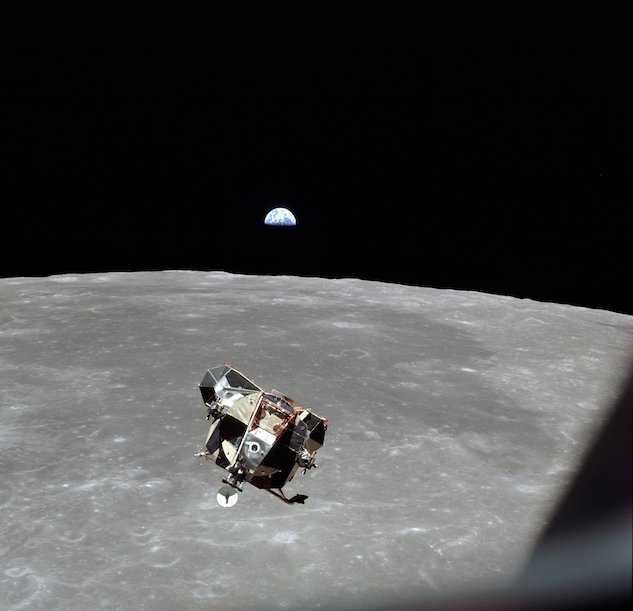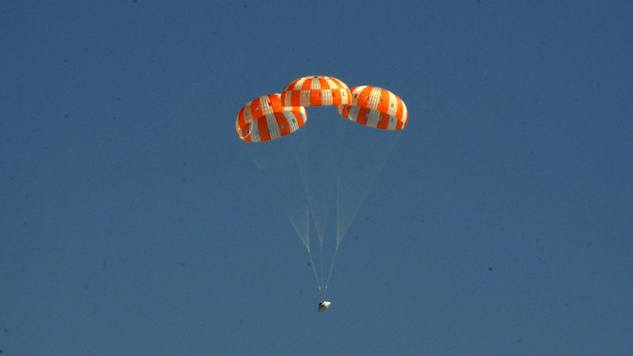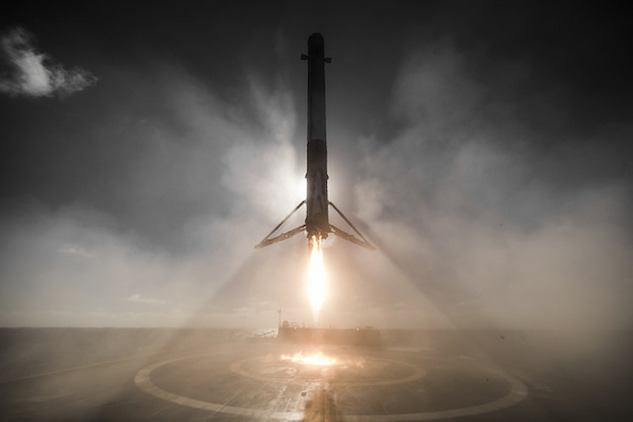
Space Matter is a weekly column that delves into space science and the mechanics of spaceflight. From the latest discoveries in the universe around us to the fits and starts of rocket test flights, you’ll find analysis, discussion and an eternal optimism about space and launching ourselves into the cosmos.
![]()
I’ve discussed our trip to Mars, why we’re planning on going there—as opposed to Venus—and how we’re planning on getting there. But believe it or not, getting to Mars is relatively easy, given current technology. The rockets that will allow us to do it are already in their late stages of development. The crew capsules are also being developed. Orion, the craft NASA is building to eventually get us to the red planet, had its first unmanned test flight back in 2014. SpaceX is discussing sending its craft, Crew Dragon, around the moon (with two private citizens on board) at the end of 2018. We’re pretty reasonably certain we can get to Mars.
But how do we land on it?
You might think, well, we landed astronauts on the moon. Mars should be just as easy!
When we went to the moon, we took a separate craft, made only to operate in space and on the moon, the lunar module (LM). It was never intended to function within Earth’s gravity. It’s likely we’d do something similar for Mars. The fact is, we don’t want to take something designed to function within Earth’s atmosphere to the surface of a planet with much thinner atmosphere because of weight. When you’re heading to the Moon or Mars, you’re going very fast. You have to slow down enough between when you enter the atmosphere and when you land such that you don’t crash into the surface. Weight is everything (more weight equals more fuel required to slow down the craft for landing), and a craft designed to function only in space, which doesn’t have to withstand Earth’s atmospheric pressure, the stresses of launch, or the conflagration of reentry, is much lighter than one that has to function on Earth’s surface.

The lunar module on its way back from the moon, as seen through the Apollo 11 spacecraft Columbia. Photo: Courtesy of NASA
When the LM detached from the spacecraft and headed for the lunar surface, it used its descent engine to slow down as quickly as possible. But the gravity on Mars is much greater than that of the moon; that means that a spacecraft will be pulled much more quickly towards the red planet’s surface. As a result, any descent engine would have to work that much harder to slow the craft down before it slams into the planet’s surface. That’s a lot of fuel, and a lot of work to ask of an engine. Right now, we’re not quite sure of how to do it, given these constraints.
We can also use parachutes to create drag and slow the spacecraft down, but sending Orion (or any capsule that uses parachutes to slow down on Earth) isn’t an option. Orion is designed for a water landing; we can’t slam the capsule into a hard surface, like we do to the rovers we send to Mars. What’s more, parachutes depend on Earth’s thick atmosphere to slow down whatever they are carrying by creating drag. Mars’s atmosphere is much, much thinner; parachutes just aren’t enough.

NASA tests the parachutes on its Orion capsule. Photo: Courtesy of NASA.
It’s hard to say what kind of strategy we’re going to use for a Mars trip, though, Will we have a landing craft that separates from whatever spacecraft ferries astronauts to Mars, returning to the original craft in orbit once the surface mission is completed? Or will the entire vehicle set down on the surface (this is unlikely because of the weight of fuel necessary to carry astronauts back to Earth)? Will we send an unmanned ship to Mars that will be waiting for crew, when they’re ready to return (a la The Martian)? However it happens, the landing strategy will likely utilize some combination of parachutes and engines to slow descent.
SpaceX is making extraordinary progress towards figuring out exactly how we can land on Mars through its first stage Falcon 9 rockets. The majority of the cost of launching anything into space is the cost of the rockets. Therefore, they’ve started landing, with the eventual intention of reusing, the first stage of the two-stage Falcon 9 crafts.

SpaceX first stage landing on January 14, 2017. Photo: Courtesy of SpaceX
Rockets work in stages; each stage uses up its fuel and then detaches in order to save on the weight being dragged upwards, out of the atmosphere. The Falcon 9 rockets were designed with a little extra fuel storage to give the first stage enough of a margin to be able to safely return to the ground. After it detaches from the second stage of the rocket, the first stage deploys grid fins, which are small wings that help it to steer through reentry. Thrusters help the rocket flip around, so it’s not just falling back to Earth. A boostback burn from the rocket’s main engine slow the rocket down, before a reentry burn, which helps control the direction of the rocket and directs it to the landing site. The final landing burn decelerates the rocket further until a vertical touchdown. Check it out with this drone footage of the first stage of a Falcon 9 landing on February 20, 2017.
If it sounds incredibly complicated, that’s because it is. And this rocket has the advantage of Earth’s atmosphere to create extra drag and slow reentry, plus it’s only one stage of a rocket. It has minimal fuel. It’s not carrying astronauts to the surface, so it can operate at the margins. It doesn’t have to worry about the weight of a spacecraft, or the people on that craft. And it certainly doesn’t need to have fuel to return to the surface.
There’s a lot we still have to figure out about what it will take to land on Mars. SpaceX is continually developing and refining their technology, which will assist whatever organization lands on Mars first, whether it be NASA, SpaceX, or another organization entirely. It’s a crucial question we have to answer before we can send astronauts to the red planet.
Top photo courtesy of SpaceX
Swapna Krishna is a freelance writer, editor and giant space/sci-fi geek.